Hamzatul Qat’ is a key Arabic phonetic symbol that creates a clear, audible cut in speech and is always pronounced, whether it appears at the start, middle, or end of a word. Marked by the symbol (ء), it differs from Hamzatul Wasl in function and articulation. Found across nouns, verbs, and particles, Hamzatul Qat’ is vital in Tajweed and Quranic recitation. When it interacts with Hamzatul Wasl, special pronunciation rules apply to maintain fluency.
Listen closely to a masterful Quranic recitation. Do you hear how some words flow seamlessly into the next, while others are separated by a tiny, sharp pause? That pause, that distinct vocal stop from the back of the throat, is the work of a specific hamza.
This isn’t just a letter; it is a fundamental tool that governs the rhythm and clarity of the Divine message. In this lesson, we will explore one of its most important forms: Hamzatul Qat’, the ‘cutting hamza’ that ensures every word stands clear and honored.
What is the Definition of Hamzatul Qat’?
Hamzatul Qat’, or the “cutting Hamza,” is a type of Hamza that is always clearly articulated and pronounced, regardless of its position in a word or its connection to the preceding word.
1. Why Is It Called Hamzatul Qat’?
It is called Hamzatul Qat’ because it creates a distinct “cut” or stop in the flow of sound, separating the sound that comes before it from the sound that comes after it.
The Arabic word “Qat'” (قَطْع) means “to cut.” When you pronounce it, you can feel a clear stop and release in your throat, which audibly “cuts” the airflow, giving this hamza its unique, sharp sound.
2. How to Pronounce Hamzatul Qat’?
Hamzatul Qat’ is pronounced by creating a complete stop of airflow from the deepest part of the throat, known as the makhraj of the ‘Aqsal-Halq’ (أقصى الحلق), and then releasing it with the required vowel sound.
Imagine the slight catch in your throat when you say the English phrase “uh-oh.” That brief stop is very similar to the articulation of Hamzatul Qat’.
Mastering this foundational sound is a crucial first step, and the expert tutors in Quranica’s Learn Tajweed for beginners Course can guide you with personalized feedback to perfect it.
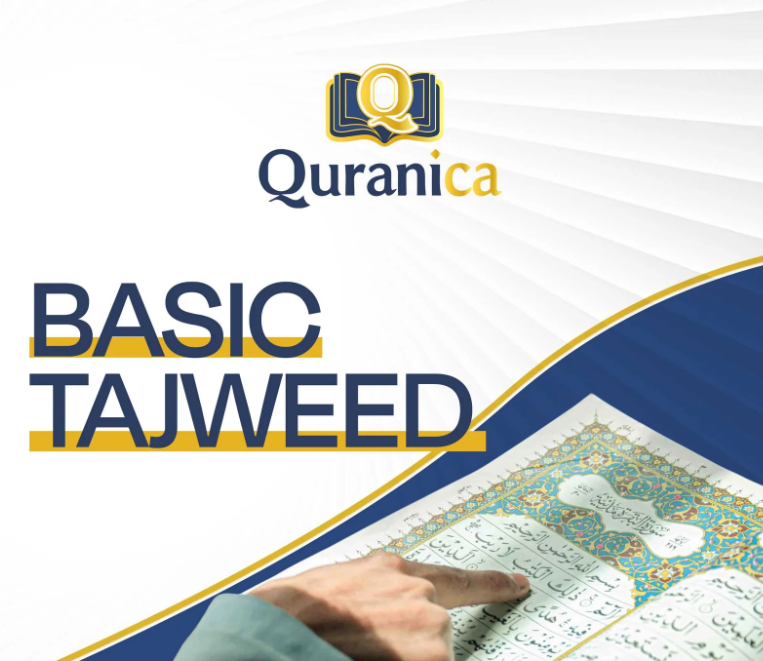
3. What is the Symbol of Hamzatul Qat’?
The symbol for Hamzatul Qat’ is a small character that looks like the head of the Arabic letter ‘ayn (ء).
This symbol, ء, is written above an Alif if it carries a fatha (أَ) or dammah (أُ), and below the Alif if it carries a kasra (إِ).
Hamzatul Qat’ can also appear on a “seat” like a Waw (ؤ) or a Ya (ئ) in the middle of a word.
What Are the Rules of Hamzatul Qat’?
The ruling for Hamzatul Qat’ is Tahqeeq (التحقيق), which means clear, precise, and full articulation. Hamzatul Qat’ must always be pronounced distinctly, with one single exception in the entire Quran.
This is a beautifully simple rule to remember: always pronounce the Hamzatul Qat’. Its sound should be unambiguous and strong, emerging from its point of articulation deep in the throat.
Positions of Hamzatul Qat’ in a Word
Hamzatul Qat’ can be found in all three positions within an Arabic word.
Let’s explore each position to see how this constant Hamza appears throughout the words of the Quran.
1. Hamzatul Qat’ at the Beginning of a Word
When Hamzatul Qat’ appears at the beginning of a word, it is always written on or under an Alif and is pronounced clearly with its given vowel.
“قُلْ هُوَ اللَّهُ أَحَدٌ”
“Qul huwa Allahu ahad”
“Say, ‘He is Allah, [who is] One,'” (Surah Al-Ikhlas, 112:1)
Here, the Hamza in “أَحَدٌ” (ahadun) is clearly articulated with a fatha at the start of the word.
“إِنَّا أَعْطَيْنَاكَ الْكَوْثَرَ”
“Innaa a’taynaakal kawthar”
“Indeed, We have granted you, [O Muhammad], al-Kawthar.” (Surah Al-Kawthar, 108:1)
In this verse, both “إِنَّا” (innaa) and “أَعْطَيْنَاكَ” (a’taynaaka) begin with a pronounced Hamzatul Qat’.
2. Hamzatul Qat’ in the Middle of a Word
In the middle of a word, Hamzatul Qat’ can sit on an Alif, Waw, or Ya, and it is always pronounced, creating that distinct stop in the middle of the word’s sound.
“الَّذِينَ يُؤْمِنُونَ بِالْغَيْبِ”
“Allatheena yu’minoona bilghaib”
“Who believe in the unseen,” (Surah Al-Baqarah, 2:3)
The Hamza in “يُؤْمِنُونَ” (yu’minoona) is pronounced clearly, creating a brief pause after the ‘y’ sound.
3. Hamzatul Qat’ at the End of a Word
When a word ends with Hamzatul Qat’, it is pronounced clearly, often following a long vowel. This is common in many verbs and nouns.
“وَاللَّهُ عَلَىٰ كُلِّ شَيْءٍ قَدِيرٌ”
“Wallahu ‘alaa kulli shay’in qadeer”
“And Allah is over all things competent.” (Surah Al-Baqarah, 2:284)
The Hamza at the end of “شَيْءٍ” (shay’in) is distinctly pronounced before moving to the next word.
Hamzatul Qat’ in Different Word Types
In Arabic grammar, words fall into three categories: nouns (Asmaa), verbs (Af’aal), and particles (Huroof). Hamzatul Qat’ makes its appearance in all three.
1. Hamzatul Qat’ in Nouns (Asmaa)
Hamzatul Qat’ is found in many nouns. This includes most proper names, plural forms, and many other common nouns that do not begin with the definite article “Al-“.
“وَإِذْ قَالَ إِبْرَاهِيمُ”
“Wa idh qaala Ibraaheem”
“And [mention, O Muhammad], when Abraham said,” (Surah Al-Baqarah, 2:126)
The proper noun “إِبْرَاهِيمُ” (Ibraahim) begins with a clear Hamzatul Qat’ with a kasra.
2. Hamzatul Qat’ in Verbs (Af’aal)
Hamzatul Qat’ appears in specific verb forms. It is consistently found in the past tense of four-letter verbs and in certain forms of three-letter verbs.
“الَّذِي أَنْزَلَ عَلَىٰ عَبْدِهِ الْكِتَابَ”
“Allathee anzala ‘alaa ‘abdihil kitaab”
“[All] praise is [due] to Allah, who has sent down upon His Servant the Book” (Surah Al-Kahf, 18:1)
The verb “أَنْزَلَ” (anzala), meaning “He sent down,” is a four-letter verb that starts with Hamzatul Qat’.
3. Hamzatul Qat’ in Particles (Huroof)
The rule here is beautifully straightforward: all particles (prepositions, conjunctions, etc.) that start with a Hamza have Hamzatul Qat’. The only exception to this rule is the definite article “ال” (Al-).
“فَاصْبِرْ إِنَّ وَعْدَ اللَّهِ حَقٌّ”
“Fasbir inna wa’dallaahi haqq”
“So be patient. Indeed, the promise of Allah is truth.” (Surah Ar-Rum, 30:60)
The particle “إِنَّ” (inna), meaning “indeed,” begins with a definite Hamzatul Qat’.
Hamzatul Qat’ Examples from the Quran
Let’s look at some diverse more examples from the Quran to see Hamzatul Qat’ in action and train our eyes and ears to recognize it.
These examples will help solidify your understanding of how this hamza appears in different words and contexts, making your recitation more confident and precise.
1. An Example of Hamzatul Qat’ in a Particle with a Kasra (i)
“إِنَّا لِلّهِ وَإِنَّـا إِلَيْهِ رَاجِعونَ”
“‘innā lillāhi wa innā ilayhi rājiʿūn'”
“Indeed, to Allah we belong, and indeed, to Him we will return.” (Surah Al-Baqarah, 2:156)
The particle “innā” (Indeed, we) and “ilayhi” (to Him) both begin with a sharp, clear Hamzatul Qat’ pronounced with a kasra.
2. An Example of Hamzatul Qat’ in a Verb with a Fatha (a)
“إِنَّا أَرْسَلْنَاكَ بِالْحَقِّ بَشِيرًا وَنَذِيرًا”
“‘innā arsalnāka bil-ḥaqqi bashīran wa nadhīrā'”
“Indeed, We have sent you with the truth as a bringer of good tidings and a warner.” (Surah Al-Baqarah, 2:119)
The verb “arsalnāka” (We have sent you) starts with a distinct Hamzatul Qat’ carrying a fatha, which must be clearly articulated.
3. An Example of Hamzatul Qat’ in a Noun with a Damma (u)
“وَلِكُلِّ أُمَّةٍ جَعَلْنَا مَنسَكًا”
“‘wa likulli ummatin jaʿalnā mansakā'”
“And for every nation We have appointed a rite.” (Surah Al-Hajj, 22:34)
The noun “ummatin” (a nation) begins with a Hamzatul Qat’ with a damma, producing a clear “u” sound at the start of the word.
4. An Example of Hamzatul Qat’ in the Middle of a Word
“قَدْ أَفْلَحَ الْمُؤْمِنُونَ”
“‘qad aflaḥal-mu’minūn'”
“Certainly will the believers have succeeded.” (Surah Al-Mu’minun, 23:1)
In the word “al-mu’minūn” (the believers), the hamza (ء) sits on a Wāw (ؤ) and creates a clear stop or cut in the middle of the word.
5. An Example of Hamzatul Qat’ in a Three-Letter Past Tense Verb
“وَإِذْ أَخَذَ رَبُّكَ مِن بَنِي آدَمَ”
“‘wa idh akhadha rabbuka min banī ādama'”
“And [mention] when your Lord took from the children of Adam” (Surah Al-A’raf, 7:172)
The verb “akhadha” (He took) is a classic example of a three-letter verb that begins with an articulated Hamzatul Qat’.
6. An Example of Hamzatul Qat’ at the End of a Word
“إِذَا جَاءَ نَصْرُ اللَّهِ وَالْفَتْحُ”
“‘idhā jā’a naṣrullāhi wal-fatḥ'”
“When the help of Allah has come and the victory,” (Surah An-Nasr, 110:1)
Notice how the verb “jā’a” (has come) concludes with a sharp Hamzatul Qat’, which must be fully articulated even at the end of the word before moving to the next.
7. An Example of Hamzatul Qat’ in In a question particle
“أَأَنتُمْ أَشَدُّ خَلْقًا أَمِ السَّمَاءُ”
“A’antum ashaddu khalqan amis samaa'”
“Are you a more difficult creation or is the heaven?” (Surah An-Nazi’at, 79:27)
The particle “أَ” (A) used for asking a question is a Hamzatul Qat’.
As you read, try to spot these examples. You can use Quranica’s Tajweed test and practice features to check your pronunciation and build confidence.

What Happens When Hamzatul Qat’ Meets Hamzatul Wasl?
When the two types of Hamzah meet in one word, which happens in specific questioning sentences, a special set of rules applies.
There are two scenarios for this meeting, primarily involving the Hamzah used for asking a question.
1. Hamzatul Qat’ (for a question) comes before Hamzatul Wasl
When the questioning Hamzatul Qat’ enters a word beginning with Hamzatul Wasl, the rule changes depending on whether the word is a verb or a noun.
In verbs, the Hamzatul Wasl is dropped completely. In nouns starting with “Al-“, the Hamzatul Wasl is kept but changed.
For the seven specific verbs in the Quran where this occurs, Hamzatul Wasl is deleted from pronunciation.
For example:
“أَتَّخَذْتُمْ”
“‘Attakhadhtum”
“Have you taken…?” (Surah Al-Baqarah, 2:80)
The original was “a-‘attakhadhtum”, but the Hamzatul Wasl is dropped for ease of pronunciation.
In the specific nouns, however, the Hamzatul Wasl is changed into a long Alif madd (6 counts) or facilitated (Tasheel).
“آلذَّكَرَيْنِ”
“‘Āldhdhakarayni”
“Is it the two males…” (Surah Al-An’am, 6:143)
Here, the Hamzatul Wasl is changed into a long vowel to avoid confusion between a question and a statement.
This distinction is a fascinating area of study in our Quranica’s Advanced Tajweed Course.
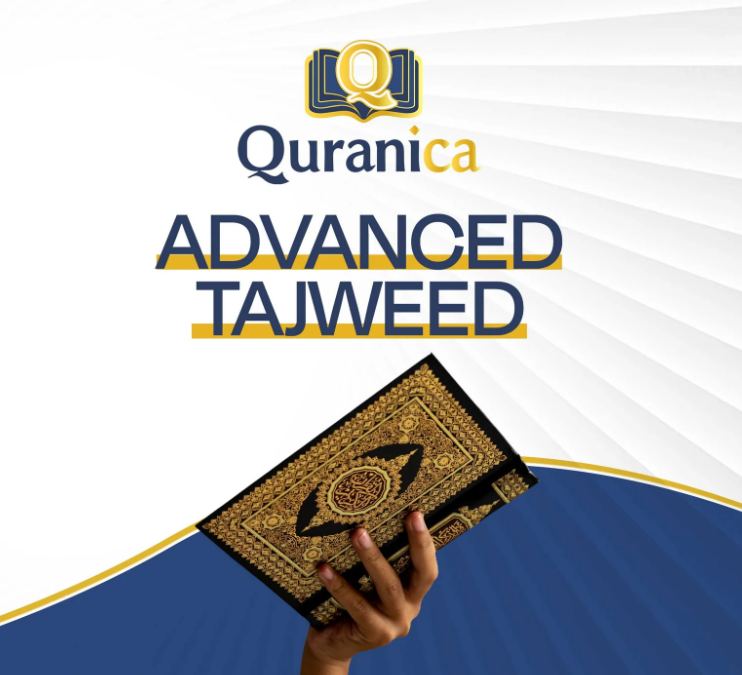
2. Hamzatul Wasl comes before a Hamzatul Qat’ with a Sukoon
When you start reading a word that begins with Hamzatul Wasl, and the next letter is a Hamzatul Qat’ with a sukoon, another change occurs.
This rule ensures the word flows smoothly from the very beginning. It’s a perfect example of how Tajweed rules facilitate beautiful and effortless recitation.
To pronounce it correctly in some Qira’at, the Hamzatul Qat’ with the sukoon is changed into a madd letter that matches the vowel of the starting Hamzatul Wasl.
“ائْذَنْ لِي”
“i’dhan lī”
“Permit me…” (Surah At-Tawbah, 9:49)
When starting this word, you read it as “ī-dhan lī”. The Hamzatul Wasl gets a kasrah, which then turns the following Hamzah saakinah (ءْ) into a Ya’ maddiyyah (ي).
Hamzatul Qat’ Worksheet
Knowledge solidifies with practice. This simple worksheet is designed to help you reinforce what you’ve learned about Hamzatul Qat’. Take your time, refer back to the rules, and try to recite the verses out loud.
Part 1: Identify & Categorize
Instructions: In the verses below, find each word that begins with Hamzatul Qat’. Write down the word and categorize it as a Noun (Ism), Verb (Fi’l), or Particle (Harf).
- “إِنَّآ أَنزَلْنَـٰهُ فِى لَيْلَةِ ٱلْقَدْرِ” (Surah Al-Qadr: 1)
- “أَلَمْ تَرَ كَيْفَ فَعَلَ رَبُّكَ بِأَصْحَـٰبِ ٱلْفِيلِ” (Surah Al-Fil: 1)
- “إِلَّا ٱلَّذِينَ ءَامَنُوا۟ وَعَمِلُوا۟ ٱلصَّـٰلِحَـٰتِ فَلَهُمْ أَجْرٌ غَيْرُ مَمْنُونٍ” (Surah At-Tin: 6)
Part 2: True or False
Instructions: Are the following statements about Hamzatul Qat’ true or false?
- Hamzatul Qat’ can be silent if you are connecting it to the word before it. (True / False)
- The hamza in the verb “ٱقْرَأْ” (iqraʾ) is a Hamzatul Qat’. (True / False)
- The symbol for Hamzatul Qat’ is always written on or under an Alif at the beginning of a word. (True / False)
Answer Key
Part 1 Answers:
- “إِنَّآ أَنزَلْنَـٰهُ فِى لَيْلَةِ ٱلْقَدْرِ”
- “إِنَّآ” (Innā): Particle (Harf). All particles starting with a hamza use Hamzatul Qat’.
- “أَنزَلْنَـٰهُ” (anzalnāhu): Verb (Fi’l). This is a past-tense verb derived from a four-letter root, which always takes Hamzatul Qat’.
- “أَلَمْ تَرَ كَيْفَ فَعَلَ رَبُّكَ بِأَصْحَـٰبِ ٱلْفِيلِ”
- “أَلَمْ” (alam): Particle (Harf). This is the interrogative particle “أ” (a), which has a Hamzatul Qat’.
- “بِأَصْحَـٰبِ” (bi-aṣḥābi): The hamza is on “أَصْحَـٰبِ”. This is a Noun (Ism).
- “إِلَّا ٱلَّذِينَ ءَامَنُوا۟ وَعَمِلُوا۟ ٱلصَّـٰلِحَـٰتِ فَلَهُمْ أَجْرٌ غَيْرُ مَمْنُونٍ”
- “إِلَّا” (illā): Particle (Harf). The particle for “except” starts with Hamzatul Qat’.
- “ءَامَنُوا۟” (āmanū): Verb (Fi’l).
- “أَجْرٌ” (ajrun): Noun (Ism).
Part 2 Answers:
- False. The defining characteristic of Hamzatul Qat’ is that it is a “cutting” hamza, meaning it is always pronounced clearly.
- False. Excellent job if you caught this! This is a Hamzatul Wasl. It is the command form of a three-letter verb (قَرَأَ), which is one of the specific cases for Hamzatul Wasl. This shows how important it is to learn the rules for both types of hamza.
- True. At the beginning of a word, the Hamzatul Qat’ uses the Alif as its “chair,” appearing as أ, إ, or أُ.
Comparison between Hamzatul Qat’ and Hamzatul Wasl
We must understand the relationship between Hamzatul Qat’ and its counterpart, Hamzatul Wasl.
While they may both appear on an Alif at the start of a word, their functions are entirely different. Think of one as a permanent fixture and the other as a temporary bridge.
The table below provides a clear, side-by-side comparison to help you distinguish between them.
| Hamzatul Qat’ (أ,إ,أُ) | Hamzatul Wasl (ٱ) | |
| Pronunciation | It is always pronounced with a clear glottal stop, whether at the beginning, middle, or end of a word, and whether starting with it or connecting from a word before it. | It is only pronounced when beginning recitation with the word. When connecting from a previous word, it is skipped entirely, creating a smooth transition. |
| Written Form | It is always written with the head of the hamza (ء) either above the Alif (أ,أُ) or below it (إ). | It is marked with a small letter Saad (ص) on top of the Alif (ٱ). It never has the hamza head (ء) written on it. |
| Location in Word | It can be found at the beginning, middle, or end of a word. | It is only ever found at the beginning of a word. |
| Grammatical Role | It is an original letter that is part of the word’s fundamental structure. | It is an extra letter, added to the beginning of a word to make it possible to pronounce a word that starts with a silent letter (sukoon). |
| Presence in Word Types | It is found in all word types: nouns (asmaa’), verbs (af’aal), and particles (huroof). | It is found only in specific nouns, specific verbs, and in the definite article “ال” (al-). |
Hamzatul Qat’ cuts the sound, demanding its own pronunciation every time. Hamzatul Wasl connects the sound, gracefully stepping aside to create a seamless link between words.
Paying close attention to the small symbol on the Alif (ء vs. ٱ) is your guide. With listening and practice, your eyes and tongue will learn to distinguish them effortlessly, beautifying your recitation.
Master Hamzatul Qat’ and More with Quranica
Congratulations! You’ve just taken a significant step toward understanding one of the core elements of Quranic pronunciation.
But reading about the rules is one thing; perfecting them in your recitation is the true goal.
At Quranica, we bridge that gap. Our tutors are not just teachers; they are native Arab speakers, esteemed graduates of the prestigious Al-Azhar University, and hold the Ijazah—the certified authority to teach the Quran.
They have dedicated years to helping non-Arab students like you connect with the Quran’s divine melody. And we are committed to making this world-class education accessible with competitive pricing.
Whether you’re starting with the alphabet in our Arabic lessons for beginners, aiming for perfection in our advanced Tajweed courses, or dreaming of memorizing the Quran in our Hifz programs for adults and kids, we have a place for you. We offer specialized classes for all, including online Tajweed classes for sisters in a comfortable environment.
Explore our full range of courses.
Our courses include:
- Arabic-related courses: whether you are a beginner or mid-level. You can choose your level and start from it.
- Memorization (Hifz) Programs: Structured memorization plans that guide students through the Quran at their own pace, supported by experienced instructors.
- Tajweed Courses: Well-designed courses help Muslims to reach the right recitation of the Quran correctly.
- Islamic Studies Courses: These courses help you know more about Islam and Tafsir. This is important since you need to understand the Quran and reflect on your daily life.
Our teachers are carefully selected to be able to explain personalized programs that adapt to each student’s level and goals. They know how to teach a child or an adult, a beginner or an advanced learner. We provide the support you need to grow.
Explore our full range of courses and start a free evaluation session.
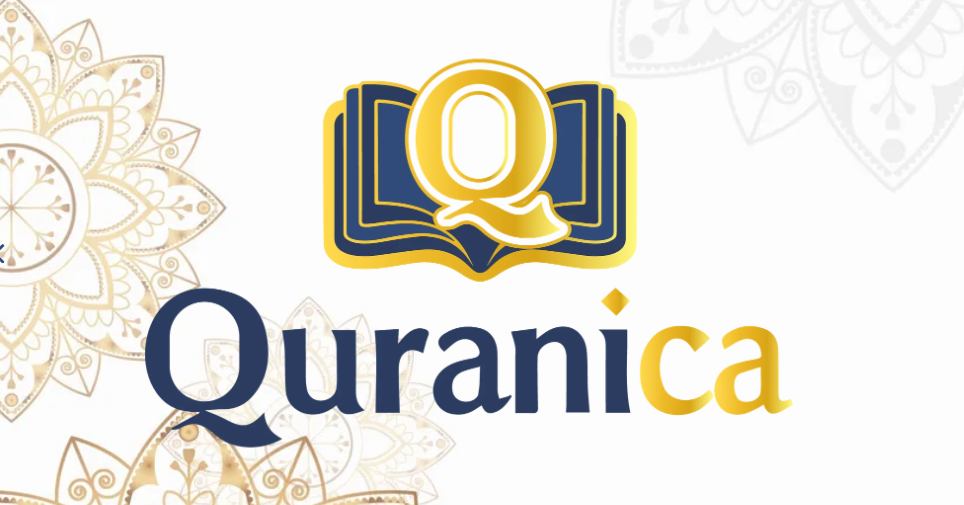
Conclusion
Hamzatul Qat’ is so named because it introduces a sharp, clear cut in speech, distinctly separating what comes before and after it. This unique sound comes from the throat’s deepest part and is essential to correct Arabic pronunciation.
It’s always pronounced and is symbolized by a hamza (ء) written above or below an Alif or seated on other letters like Waw or Ya.
Its pronunciation resembles the brief pause in saying “uh-oh” in English, requiring a full stop and release from the throat. Hamzatul Qat’ appears in all word positions—beginning, middle, and end—and always maintains a strong, audible presence, as demonstrated in many verses of the Quran.
It can be found in nouns, verbs, and particles. Proper names, past tense verbs, and questioning particles frequently start with this hamza. Regardless of grammatical role, its clarity in articulation never changes, except for one unique Quranic case.
When Hamzatul Qat’ meets Hamzatul Wasl, special Tajweed rules apply to ease pronunciation. Depending on the word type, the Hamzatul Wasl may be dropped, altered, or replaced with a long vowel, especially in questioning forms or when preceded by a Hamzatul Wasl.
A comparison between Hamzatul Qat’ and Hamzatul Wasl reveals their opposite roles—Qat’ is always vocalized, while Wasl may be silent in connected speech. Mastering both is essential for smooth, correct Quranic recitation, and tools like worksheets and practice recitation can greatly support learning.

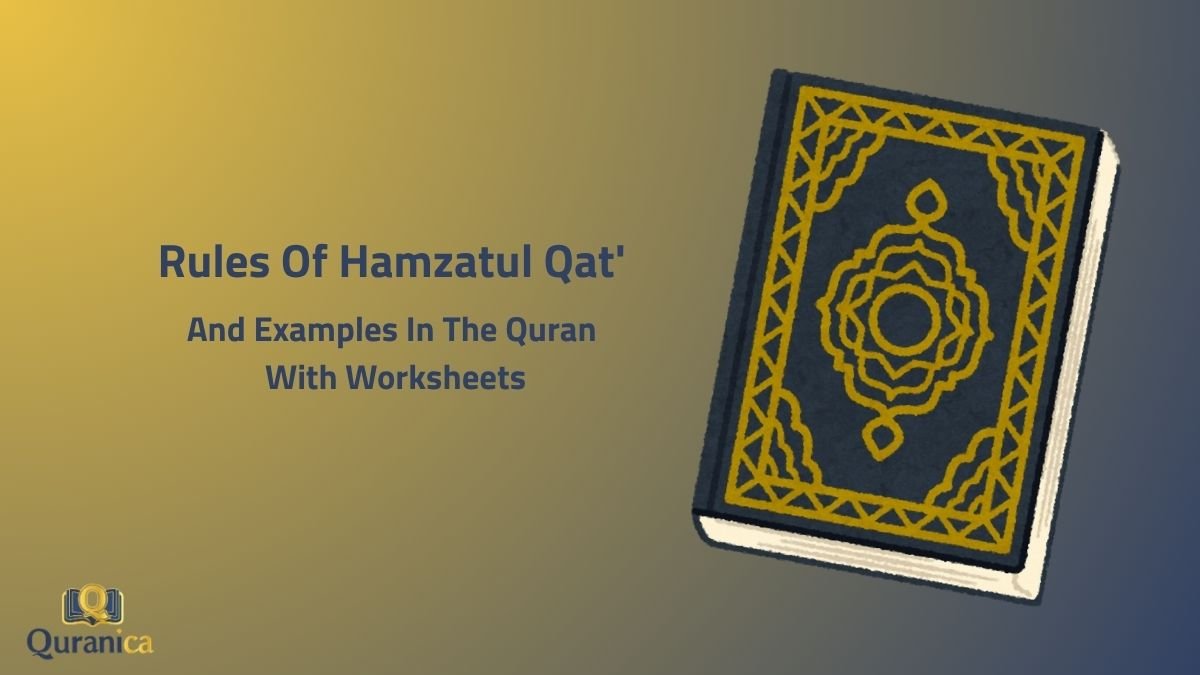



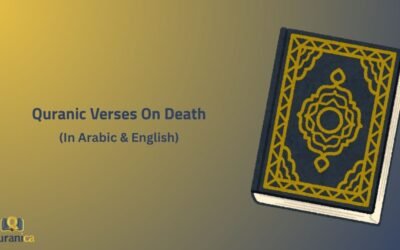

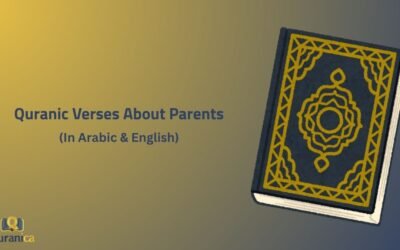
0 Comments